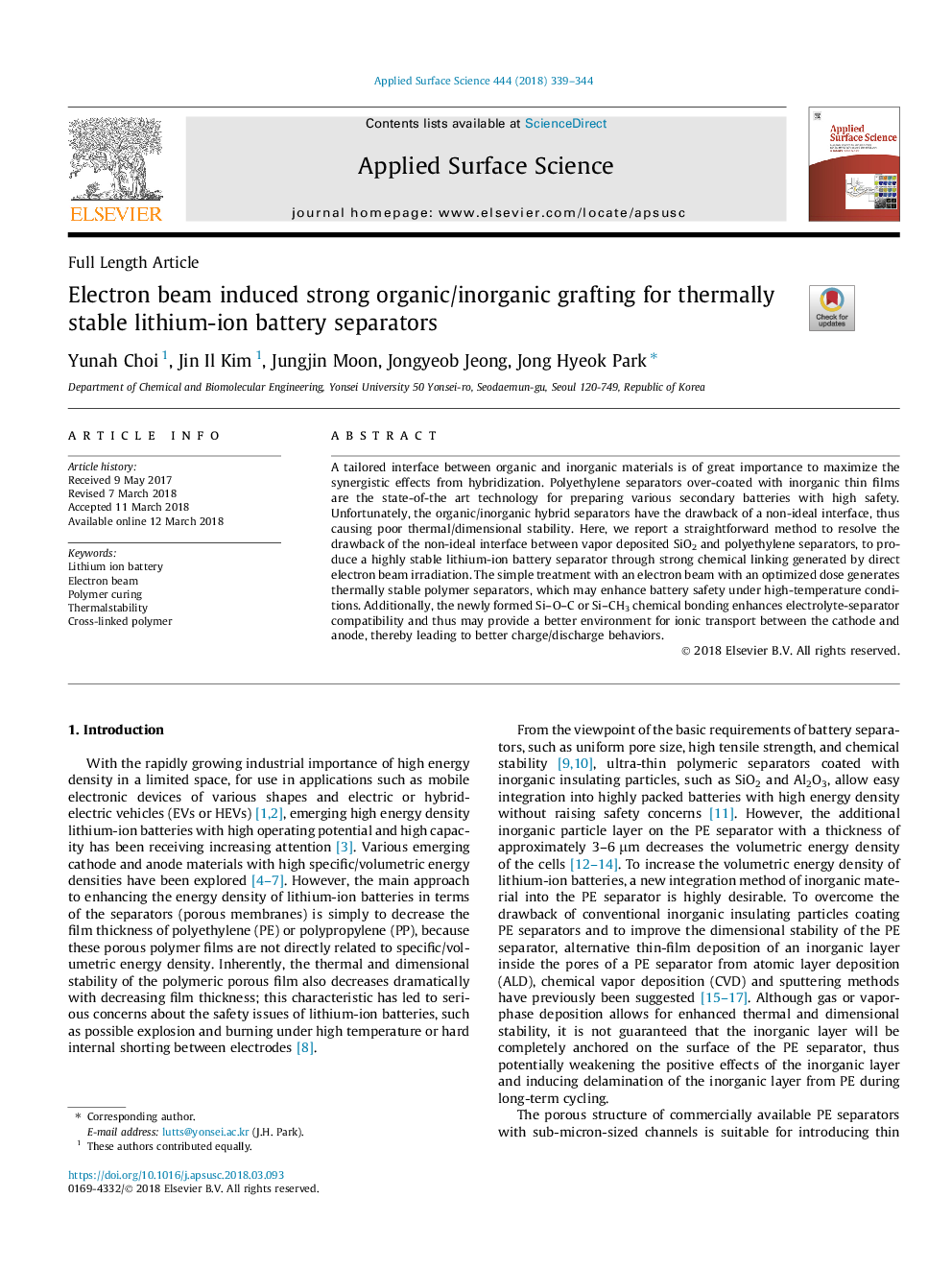| Article ID | Journal | Published Year | Pages | File Type |
|---|---|---|---|---|
| 7834474 | Applied Surface Science | 2018 | 6 Pages |
Abstract
A tailored interface between organic and inorganic materials is of great importance to maximize the synergistic effects from hybridization. Polyethylene separators over-coated with inorganic thin films are the state-of-the art technology for preparing various secondary batteries with high safety. Unfortunately, the organic/inorganic hybrid separators have the drawback of a non-ideal interface, thus causing poor thermal/dimensional stability. Here, we report a straightforward method to resolve the drawback of the non-ideal interface between vapor deposited SiO2 and polyethylene separators, to produce a highly stable lithium-ion battery separator through strong chemical linking generated by direct electron beam irradiation. The simple treatment with an electron beam with an optimized dose generates thermally stable polymer separators, which may enhance battery safety under high-temperature conditions. Additionally, the newly formed Si-O-C or Si-CH3 chemical bonding enhances electrolyte-separator compatibility and thus may provide a better environment for ionic transport between the cathode and anode, thereby leading to better charge/discharge behaviors.
Related Topics
Physical Sciences and Engineering
Chemistry
Physical and Theoretical Chemistry
Authors
Yunah Choi, Jin Il Kim, Jungjin Moon, Jongyeob Jeong, Jong Hyeok Park,
